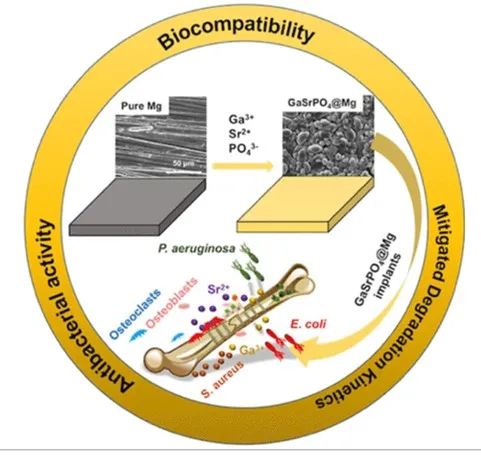
The Li Group - Trauma and Orthopaedic Research Unit
The Trauma and Orthopaedic Research Unit (TORU) undertakes clinical and laboratory research in the field of orthopaedics.
Research themes
About
Trauma and Orthopaedic Research Unit (TORU) is a collaborative laboratory facility founded by Professor Paul N Smith AM with laboratories at Canberra Hospital and at the John Curtin School of Medical Research at the ANU. With this facility, TORU possesses a significant capability to conduct research across a diverse range of fields.
Associate Professor Rachel Li is the Laboratory Research Lead of TORU.
TORU Laboratory Key Research Areas
1. Osteoimmunology, Big Data and Modelling
TORU Lab has designed and led a list of projects in collaboration with orthopaedic surgeons on sampling, banking and miRNA/mRNA sequencing of the patients’ blood and bone tissue. The project has identified exosomal miRNAs as regulators of mRNAs in osteolysis of the patients undergoing revision total joint replacement (TJR). Dr Yi Deng, a current surgeon and PhD student at TORU Lab is working on this project. We are currently expanding the project to seek national and international participants for big database and modelling aiming to have 300 patients recruited. This program will provide better understanding of mRNA related to aberrantly expressed miRNAs, which would be targets in drug development (See Figure 1 below).

2. Preclinical Trial Using Sheep Model - 3B Materials for Future Orthopaedic Implants
Dr Alexander Bobinskas a consultant surgeon in Oral and Maxillofacial Unit at Canberra Hospital. In addition to running his clinical practice, Alex is currently doing his PhD (Part-time) in TORU Lab with A/Prof Rachel Li and Prof Paul Smith. Alex has started the experiment of testing 3B (biocompatible, bioactive and biodegradable) materials on sheep model. This is in collaboration with Charles Sturt University and RMIT University. This pilot study tests the biocompatibility of the novel alloy Gallium-Strontium Phosphate Coated Magnesium (See Figure 2) and assesses local tissue reaction and fracture healing at the test site as well as systemic absorption of metabolites on large model. ANU School of Medicine and Psychology (SMP) students, Jack XingJian Gong and Guang Rui Kelvin Xu are also working on the sub-project in this program. We aim to undertake an expanded study on sheep, more closely analogous to human surgical applications during 2024-2025 before submission an application on human clinical trial to TGA (Therapeutic and Drug Administration, Australia) and to FDA (Food and Drug administration, USA).

3. Customized Coating Functionalized Coating Materials to Prevent Bacterial Infections
Bacterial resistance to antibiotics is one of the most serious challenges to global public health, as drug resistance has been found for all classes of antibiotics used in clinical practice. Infection is a leading cause of revision surgery and is associated with significant patient morbidity. The relative mortality in patients undergoing revision surgery for infected hip arthroplasty is twice that of patients undergoing revision for other causes. Since the implant surface plays a crucial role in early bacteria adhesion, we, with our collaborators at Monash and RMIT University, have developed a novel surface modification strategy. Dr Tom Cheng (MD. PhD), a surgeon and researcher at TORU Lab has been leading a new biomaterial, the silver nanoparticles coated magnesium alloy. The results of this project have established a standard testing protocol to evaluate the susceptibility of orthopaedic implant materials to biofilm and to utilize this methodology to analyse the effectiveness of strategies to prevent biofilm formation (See Figure 3 below).

4. Biomarkers for Arthrofibrosis after Total Knee Arthroplasty (TKA)
This program aims to analyze the circulating miRNA pre-operation of the TKA and knee tissue mRNA post primary TKA. We will bridge between the data of bioinformatics analyses and clinical scenarios with the expectation providing precise predictors for prognosis of arthrofibrosis and biomarkers for prevention and drug discovery. This is prospective study in collaboration with TORU clinical research aiming to recruit 300 patients’ blood and knee synovial tissue for plasma miRNA and tissue mRNA analysis including miRNA and mRNA sequencing, RT-RNA expression and protein assay. Dr Tom Ward, Senior Lecturer at ANU SMP and researcher at TORU Lab, student Jack Gong, are working on this prospective study, which will pave a new way for precise prognosis and drug discovery for arthrofibrosis after TKA. In this program, we are working on drug development for Anti-arthrofibrosis in Knee Arthroplasty Furthermore, we are exploring the role of a treatment cream (TTO, sorry for not provide the full name), which will be used for early prevention of arthrofibrosis formation. Our Master Student, Yixuan Li, is on this project. We are going to test the TTO treatment on patients and seeking for orthopaedic doctors and patients’ support. (See Figure 4 below).

5. The 3D Printed Scaffolds for Bone Tissue Regeneration
Bone health is a very important aspect that affects the quality of human life. With that in mind, bone implants and bone tissue regeneration research has been making giant strides and at the same time is under scrutiny to find better, less invasive and longer lasting materials to facilitate bone growth and regeneration. We have been collaborating with ANU Research School of Chemistry on polymer development (see Figure 5 on page 4). Ms Lilian Boton (current PhD student), Mr Yunis Moukbil (a current technical assistant at ANU SMP, and a coming PhD student of TORU Lab), and and SMP student Luke Meogrossi, are working on the skin and bone tissue regeneration projects. They proposed that combining these materials will be more effective in skin/bone tissue regeneration, than combinations used to date. In addition, photobiomodulation (PBM) has been shown to improve cell survival and reduce inflammation during wound healing. Yunis is currently developing the materials for bone tissue regeneration using biochemical technology and 3D printing technology.











